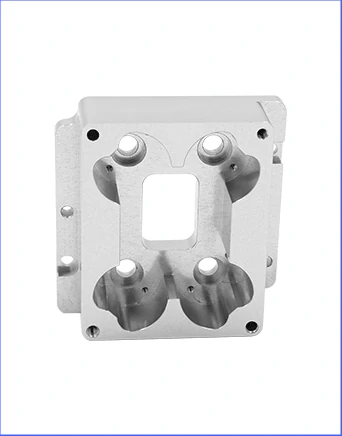Time to read: 6 min

CNC machining is an indispensable technique in modern manufacturing, capable of producing a vast array of parts with high precision and repeatability. It is a process where initial concepts are transformed into tangible forms through advanced technology, utilizing CAD software and G-code to direct CNC machines in shaping parts from solid blocks.
Understanding CNC Machining
CNC machining encompasses a range of operations, including milling and turning, which can be performed on machines with various axes capabilities. The process is adaptable to materials such as metals, plastics, and composites, and is suitable for prototyping and mass production.
CNC Design Guidelines for Cost-Effective Machining
To harness the full potential of CNC machining, it is crucial to adhere to design practices that reduce costs while maintaining quality and precision.
- Avoid Complex Geometries: Opt for simple and flat geometries to reduce machining time and tool wear.
- Increase Internal Fillet Size: Larger fillets enhance machining efficiency and part strength.
- Design Undercuts for Material Removal: Undercuts improve tool access and material flow during cutting.
- Use Standard Tolerances: Adhering to standard tolerances minimizes the need for secondary operations.
- Consider Text and Lettering in Design: Ensure that text remains legible and meets specifications.
- Part Size Considerations: Choose the appropriate machine based on part size to optimize the machining process.
- Select Softer Materials: Easier-to-machine materials can reduce costs and improve part quality.
- Minimize Tool Changes: Design parts to minimize the need for frequent tool changes and workholding setups.
Specific Design Tips for CNC Milling and Turning
- Keep Standard Cutting Tools in Mind: Align designs with the capabilities of standard tools to reduce costs.
- Avoid Sharp Internal Corners: Utilize radiused corners to accommodate the limitations of CNC milling tools.
- Prevent Deep, Narrow Slots: Ensure the depth of cut does not exceed recommended ratios to avoid tool deflection.
- Design for Larger Internal Radii: Larger radii are more efficient for machining with larger cutters.
- Choose Suitable Wall Thickness: Adequate wall thickness ensures part stability and dimensional accuracy.
Material Selection for CNC Machining
The choice of material affects machinability, cost, and quality. Metals and plastics are common choices, each with their unique properties and applications.
Surface Finishes for CNC Machining
Selecting the appropriate surface finish is crucial for the part's appearance and functionality. Options include as-machined surfaces, bead blasting, anodizing, powder coating, and custom finishes.
Transforming CNC Design into Machined Parts
RapidDirect offers a streamlined process for turning CNC designs into reality. With ISO 9001:2015 certification and a user-friendly digital manufacturing platform, customers can upload technical drawings, receive instant quotes, and initiate manufacturing with ease.




